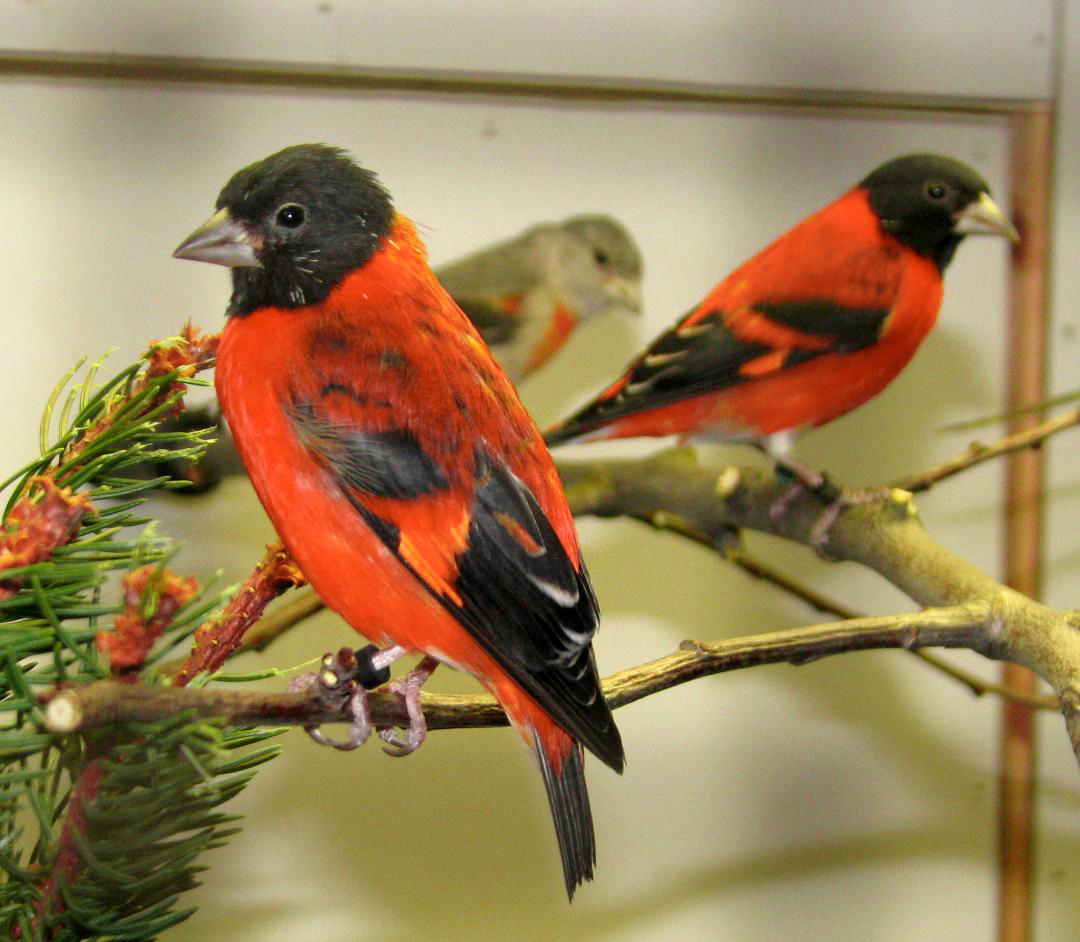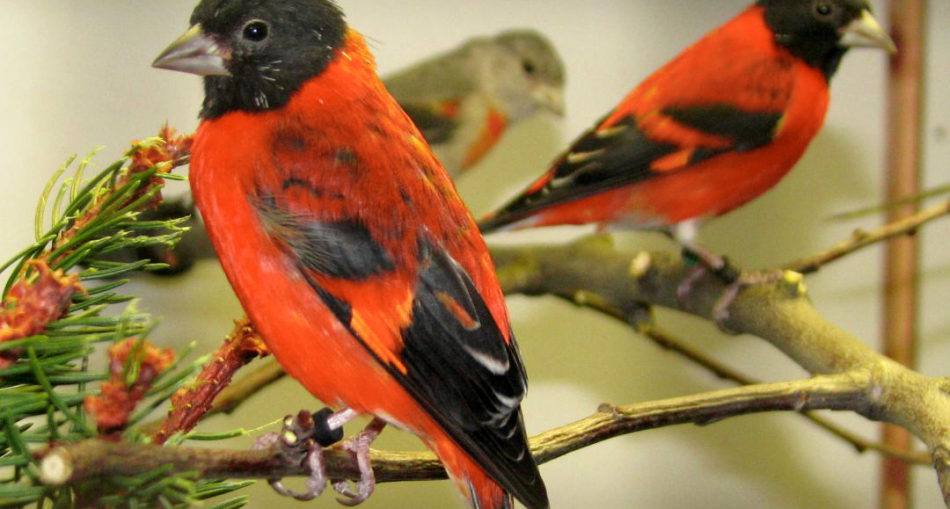The Red Siskin is a small, brilliant vermillion-red finch which is almost extinct with only a few remaining accounts for the species in the world. These brightly coloured, sociable birds native to tropical South America in Columbia, Guyana and Venezuela where they are listed as nationally critically endangered. The Red Siskins population in Trinidad have not been spotted since the 1960s and may be extinct on the island. The scientific name of the Red Siskin is (Spinus cucullatus) but it is known as cardenalito in Venezuela. Read on to find out more about this endangered species of red and black finch.
Interesting Tip
- A population was discovered in southwest Guyana, in 2000.

Red Siskin – By Edward Cwik – Own work, CC BY-SA 3.0, https://commons.wikimedia.org/w/index.php?curid=20682423
Description Of The Red Siskin
The Red Siskin is relatively small finch, reaching a length of ten (10) cm. The bird primarily has a deep red body with a black head, chin throat, tail tips and flight feathers with a whitish under tail and lower belly. Its female counterpart has a grey head, breast and upperparts with a red rump and upper tail. Their breasts are typically grey, with reddish flanks while the remaining underparts, tails and wings resemble that of the male. The immature males are brown in colour while the immature females are paler than adults. The juvenile Red Siskin is grey but the colour darkens as the bird ages.
Scientific Classification Of The Red Siskin
- Kingdom: Animalia
- Phylum: Chordata
- Class: Aves
- Order: Passeriformes
- Family: Fringillidae
- Subfamily: Carduelinae
- Genus: Spinus
- Species: S. cucullatus
Habitat Of The Red Siskin
The Red Siskin lives in numerous habitats in northern Venezuela such as deciduous and tropical, wet mountain forests and spiny, scrub forest-savannahs. It is also found in open-country places such as forest edges and grasslands with some trees and shrubs. However, the bird seems to prefer dry forests of four hundred and one thousand four hundred (400-1400) m.
Diet Of The Red Siskin
The typical diet of the Red Siskin primarily consists of grass seeds, fruits, flower buds and herbaceous plants. In captivity, the birds are fed a mixture of finch seed mix, canary seed mix and thistle seeds, lettuce and pellets.
Reproduction Of The Red Siskin
The first breeding season of the Red Siskin occurs between April to June and the second between November and December. Their nest is a grassy cup placed high up in a cluster of trees. The clutch typically consists of three to four (3-4) greenish-white eggs which hatch in twelve to fourteen (12-14) days. The hatchlings are small and provided with food by the female parent. After about twelve (12) days they gain feathers. The average lifespan of the Red Siskin is around four (4) years in the wild but in a human-managed population, they can live twice that age!
8 Facts About The Red Siskin
- The Red Siskin migrates according to the wet season in its native areas.
- The juveniles birds start moult at three to four (3-4) months of age.
- The call of the Red Siskin l is a high-pitched chitter and sharp chi-tit like the Indian silverbill.
- The male Red Siskin sounds similar to a goldfinch with delightful twitters and trills.
- The Red Siskin used to form semi-nomadic flocks when their numbers were larger.
- Because it has a beautiful plumage the bird has been interbred with domestic canaries producing varieties with red plumage.
- The species is involved in a captive breeding program at the National Aviary in Pittsburgh, Pennsylvania, U.S.A.
- There is a program called the Red Siskin Initiative lead by the Researchers at the Smithsonian Conservation Biology Institute with the goal of uncovering more about Red Siskins and the prevention of its extinction.
Status Of Conservation Of The Red Siskin
The Red Siskin (Spinus cucullatus) is listed as an endangered species by the International Union for the Conservation of Nature (IUCN) Red List and is listed as nationally critically endangered in neighbouring Venezuela.
About The Red Siskin
The Red Siskin is a small, red finch, native to a number of habitats in South America. The birds typically feed on seeds and are sociable when there is a lot of them in one place. Red Siskins in captivity live longer than those in the wild. While the bird is at risk of extinction but there have been several attempts to prevent this.
Article Reference
- https://nationalzoo.si.edu/animals/red-siskin
- https://www.beautyofbirds.com/redsiskins.html
- https://en.wikipedia.org/wiki/Red_siskin







